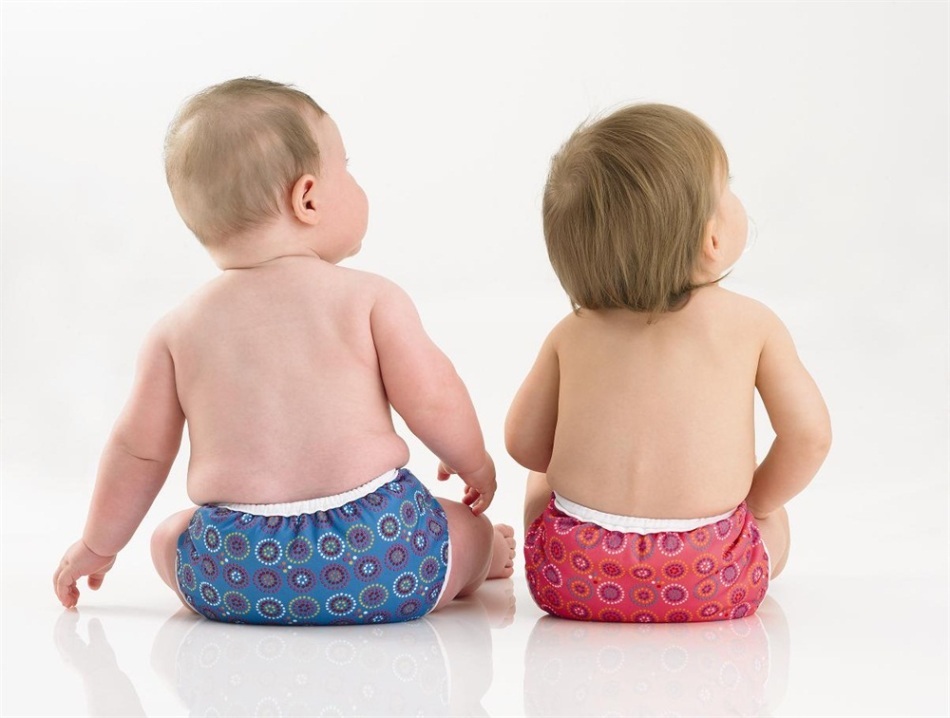Did you count how much the family budget spent on the baby diapers per month? Want to learn how to save money at the expense of the child? In this article, you will learn what reusable diapers are, what they are and practical advice on how to use them.
Contents
- Let's find out what reusable diapers are?
- Difference of a disposable diaper from disposable: pros and cons
- Types of reusable nappies
- Reusable diaper coal bamboo
- How to adjust the size of a reusable diaper?
- How to use reusable diapers?
- Why a disposable diaper can leak?
- How to wash and dry reusable diapers?
- How many diaper diapers are needed and where to buy them?
- Video: How to use reusable diapers?
Today, more and more parents are choosing reusable diapers for their kids, despite the fact that in all supermarkets the shelves are crammed with disposable Pampers, Libero, Huggies, etc.
What is it that guides them?
Of course, the desire to use a natural and environmentally friendly for your baby, as well as a desire to save money.
Let's find out what reusable diapers are?
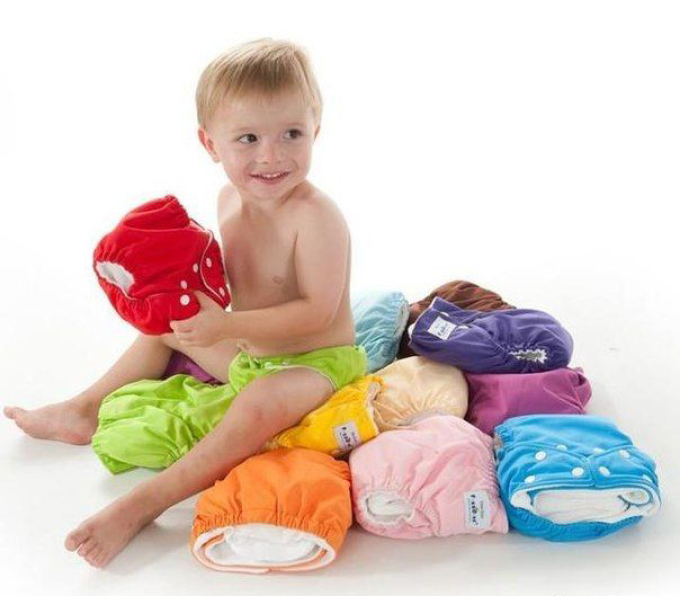 The difference between a reusable diaper and a disposable: the pros and cons of the
The difference between a reusable diaper and a disposable: the pros and cons of the
The disposable diaper was invented in 1957.Victor Mills, a chemist-technologist working for Procter & Gamble. The main purpose of this invention was to facilitate the life of parents.
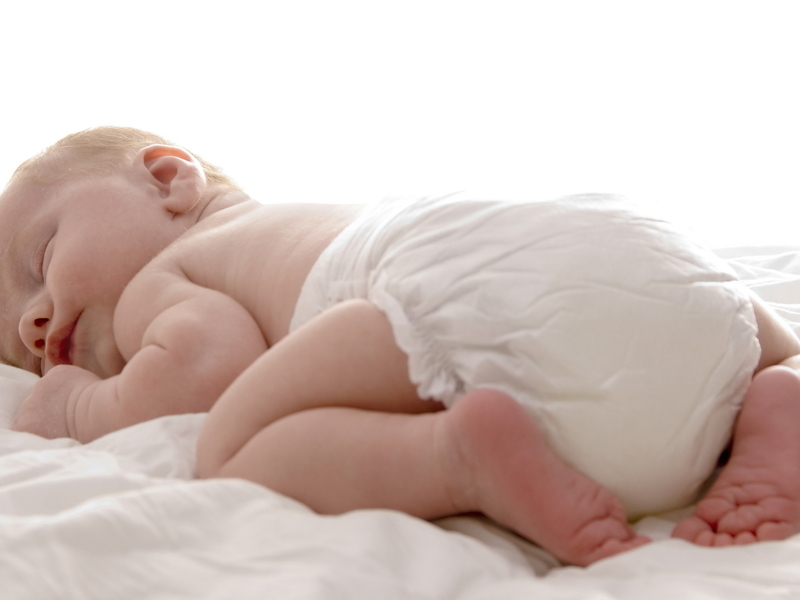 Pros:
Pros:
- are easy to use;
- lack of constant washing, underwear, night shifts, change of clothes on walks;
- is a good disposable diaper to ensure the baby's dryness.
Cons:
- disposable diapers - it's expensive;
- are made not only from natural materials;
- diapers should be changed at least every 6 hours, otherwise serious diseases of the genitourinary system may occur;
- the child does not notice when "doing its own things";
- parents can not track the frequency of urination and their number, which for certain diseases is important to know;
- parents may not notice when the child went "by and large", which can lead to an infection of the urinary tract and irritation of the mucosa;
- allergic reactions to materials from which the diapers are made are possible;
- breathing of the skin under the diaper is broken, and this is 30% of the total body of the child;
- such diapers are bad for the environment, after one child there is a whole ton of garbage, which does not decompose, and 4-5 trees are used for making one diaper;
- doctors do not recommend wearing disposable diapers for certain diseases, such as diathesis, dermatitis, eczema, fever and diarrhea.
Reusable diapers were used by women back in the Middle Ages. The materials, of course, were different: flax, wool, hemp, later it was gauze. A lot of washing, yes, but everything is natural and does not harm the baby's health.
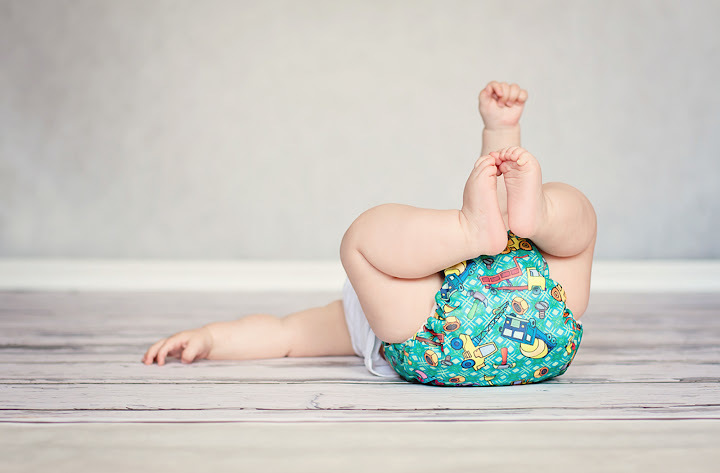
Pros:
- are environmentally friendly and made of natural materials;
- does not worsen skin breathing;
- the child feels when he "does his business";
- provide a good "wide swaddling", which is very important for the correct development of the musculoskeletal system of babies;
- does not cause allergies;
- use reusable diapers is much cheaper than disposable diapers, do not need to constantly buy new diapers;
- can be used for several children;
- do not cause such serious damage to the environment, as they are disposable. Do not leave a ton of non-decomposable garbage, are made from simpler materials that do not require cutting down trees;
- there are no medical contraindications for their use.
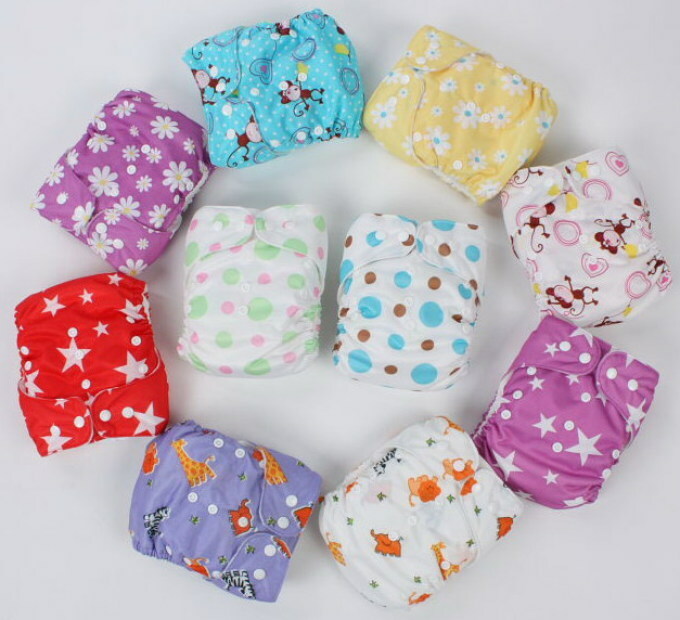
Cons:
- require constant washing;
- it is necessary to change them often enough, which is inconvenient during a night's sleep and on the road;
- in cold weather for a walk is better not to use.
CONCLUSION: You can use both disposable and disposable diapers, the main thing is to combine them correctly!
Types of reusable diapers
Modern fabric diapers differ from their predecessors and represent panties and liners. Diapers of different manufacturers undoubtedly differ from each other, but the principle of action remains common: liners absorb moisture, and panties do not allow moisture to get into the outside.
 inserts are made of different materials:
inserts are made of different materials:
- cotton;
- microfiber;
- white bamboo fabric;
- carbon bamboo fabric.
Cotton is mainly used for babies, becausevery soft and do not rub the delicate skin of the baby, but relatively less absorb moisture, but for newborns and more is not needed.
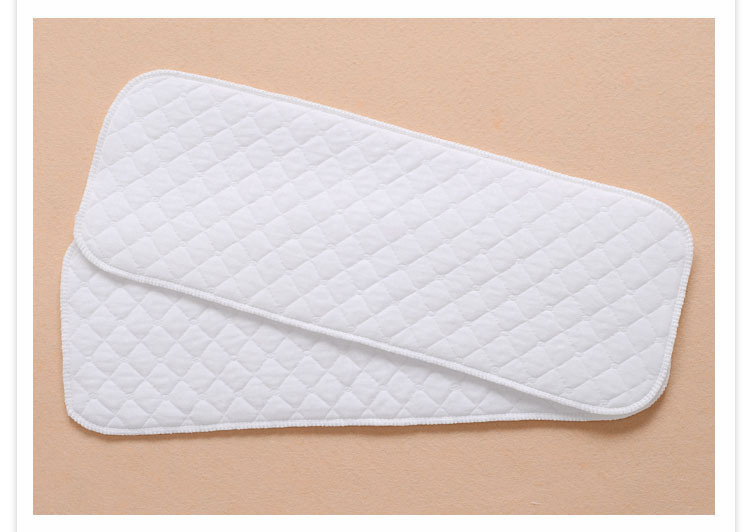 Liners are of different thicknesses:
Liners are of different thicknesses:
- two-layer;
- three-layer;
- four-layer
- and five-layer.
The absorbency of the liners depends on the material of which they are made and on the number of layers. Often apply several materials in one liner. For example, the outer layer in contact with the baby's skin is made of a fabric that, thanks to its properties, allows moisture to pass through and remains practically dry, and the inner layers absorb moisture.
Reusable nappy bamboo charcoal
The best material is bamboo-charcoal( black), which has a good microstructure, excellent absorbing capacity, antibacterial properties and is an environmentally friendly material.
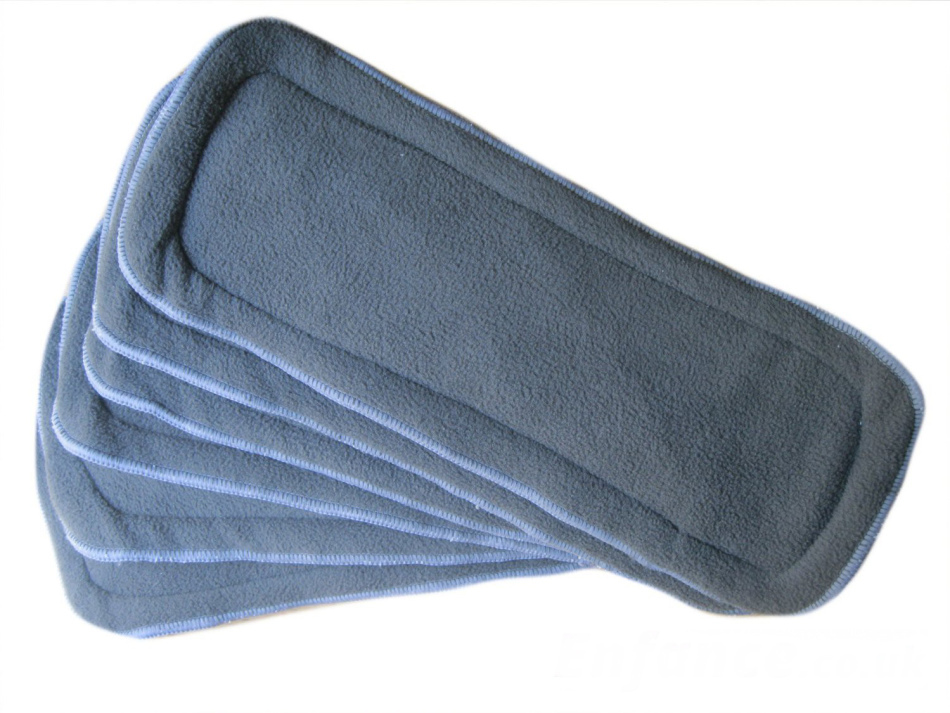
In such liners the outer layer is made of bamboo-carbon fabric, and the inner ones are made of microfiber.
Panties in reusable diapers are sewn from a special fabric that does not get wet, but lets the air in both a dry and a filled state. The inner surface of the panties consists of a fabric that is well-permeable to moisture, but remains practically dry. This design allows the baby's skin to breathe and stay dry, does not cause diaper rash and dermatitis.
On the back and sides of the legs are sewn rubber, which additionally protects from leaks, tightly fitting the body of the baby.
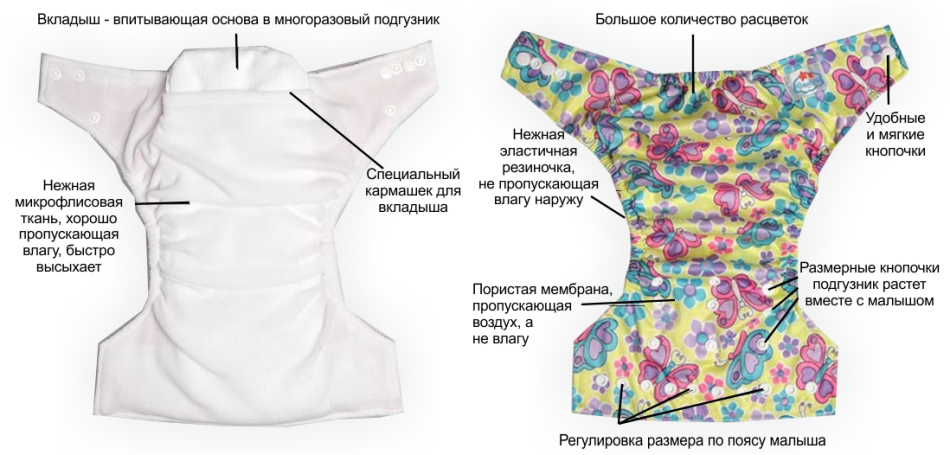 The outer fabric in panties also differs:
The outer fabric in panties also differs:
- polyester with a special waterproof coating( within reason, of course, this is not a film),
- is a natural cotton fabric, but it unfortunately more quickly and more often gets wet;
- velor outer layer, very soft and pleasant to the body, beautiful colors, but this diaper will dry very long.
Inner fabric in diapers also use a different:
- microfleece;
- coal-bamboo;
- Setochka is a summer variant.
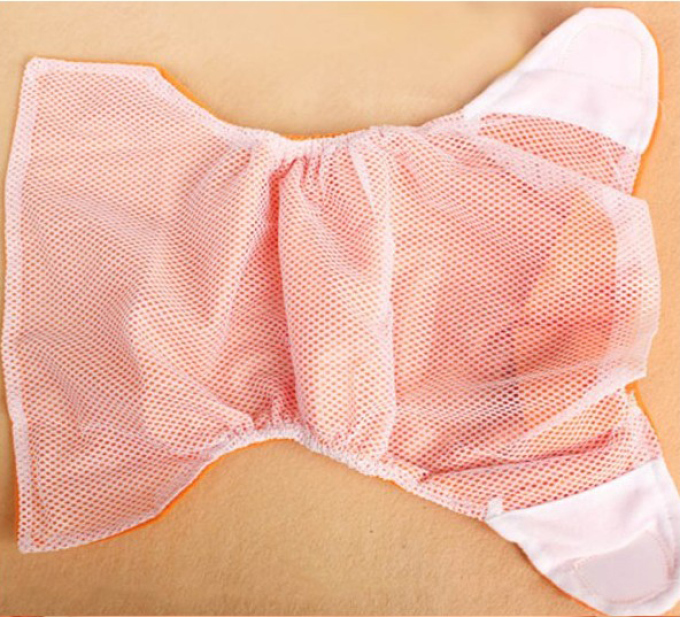 It should be noted that panties with a mesh are quite practical and convenient to use.
It should be noted that panties with a mesh are quite practical and convenient to use.
- , first, they very quickly dry;
- second, they are thin and comfortable to wear;
- in the third place, "big things" are easily removed from them and easily erased.
Some manufacturers offer additional protective rubber bands and an inner layer of angled-bamboo fabric.
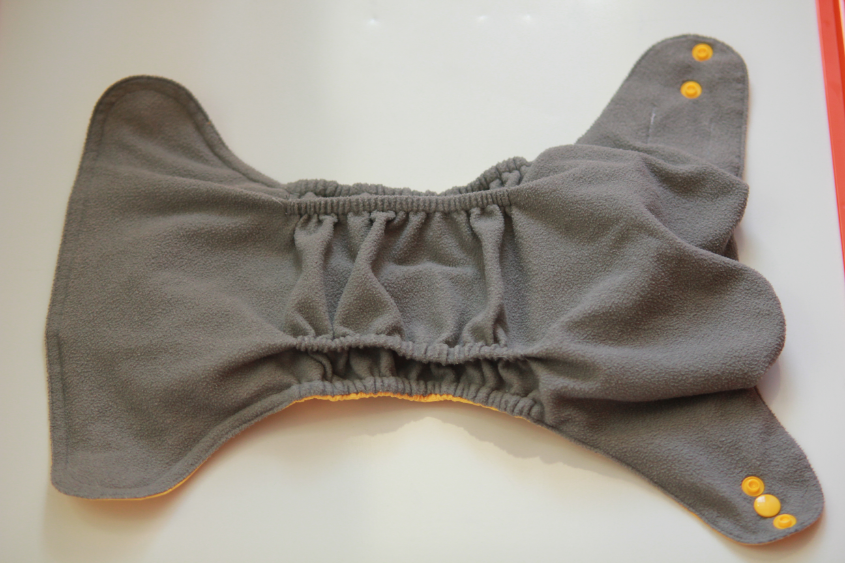 Just choose what your heart desires and what the pocket allows. Now there is a wide choice of reusable diapers, monochrome and multicolored, with buttons and velcro, made of different materials.
Just choose what your heart desires and what the pocket allows. Now there is a wide choice of reusable diapers, monochrome and multicolored, with buttons and velcro, made of different materials.
By the way, about buttons and Velcro. Here, too, choose how you will be more comfortable.
- There are panties that are fastened on the buttons .Usually 2pcs on each side, but there is an additional third, which regulates the completeness of the legs.
- Panties fastening on the Velcro .The disadvantage of this fastener is its fragility and the fact that it can "cling" to the clothes.
 How to adjust the size of a reusable diaper?
How to adjust the size of a reusable diaper?
With the buttons you can adjust two parameters:
- width on the tummy, snapping closer or further from the center, make sure that the buttons are closed symmetrically;
- height / depth of the diaper, snapping the top row of the central buttons with one of the bottom ones or leaving them open.
Depending on how the buttons for height / depth adjustment are snapped, the following dimensions are adopted:
- S , for children from 3 to 8 kg, the upper and lower row of buttons will snap;
- M , for children from 6 to 10 kg, the upper and middle rows will snap;
- L , for children from 9 to 15 kg, the buttons remain open.
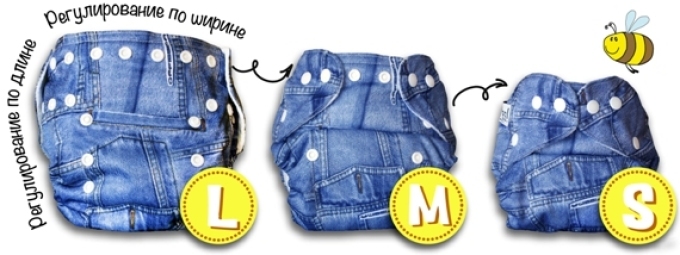 How to use reusable diapers?
How to use reusable diapers?
Inserts in panties can be used in two ways:
- Put on top of the pockets in panties, and not into it, to save the diaper for the next dressing. In this case, you can use one panty 2-3 times. This method is suitable if you are at home and can replace the liner if necessary on a clean one.
- Put the insert in the pockets on the panties, and if you want to increase the time of use( for walking, sleeping), you can use 2 liners at the same time. This will not cause discomfort to the baby, becausethey will be fixed in the pocket, and the inner fabric of the diaper will ensure dryness in contact with the skin. With this method of disposing the liner, it is not possible to reuse the diaper, only after washing.
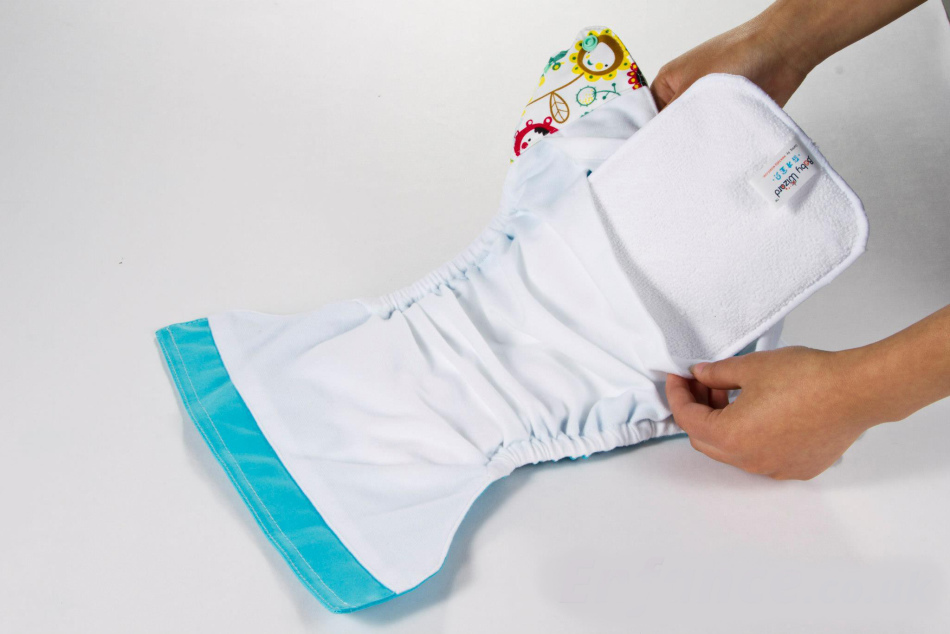
TIP: To avoid undesirable effects, do not leave your baby in reusable diapers for a long time.
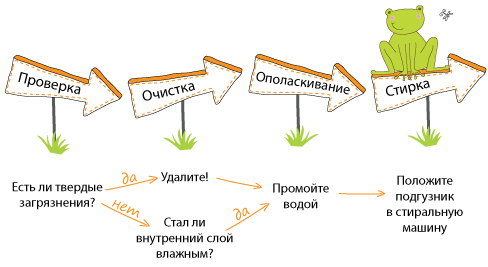 When will I change the diaper? If the liner absorbs a sufficient amount of liquid, it no longer retains moisture and the inner material of the panties becomes wet. When this happens, the diaper needs to be changed. On average, this usually occurs after 1-3 hours. When using two inserts at the same time, the diaper can be used for 4-6 hours. If you put the liner on top of panties, and not in a pocket, feel the rubber bands near the legs. Are they dry? You can reuse the diaper, if wet, replace it with a clean one.
When will I change the diaper? If the liner absorbs a sufficient amount of liquid, it no longer retains moisture and the inner material of the panties becomes wet. When this happens, the diaper needs to be changed. On average, this usually occurs after 1-3 hours. When using two inserts at the same time, the diaper can be used for 4-6 hours. If you put the liner on top of panties, and not in a pocket, feel the rubber bands near the legs. Are they dry? You can reuse the diaper, if wet, replace it with a clean one.
Why a disposable diaper can leak?
Yes, accidents sometimes happen, as without them? There are several reasons for this, having warned that you will succeed.
- The new diaper can be used for the first time. After several washes the problem will be gone. This is due to the fact that natural materials contain oils that need to be washed off so that the fabric begins to flow through and absorb moisture.
- You wash the diaper with soap or add air conditioning. This should be discarded.clogged pores of material inside the diaper.
- You have been holding your baby too long in a diaper and he simply can not absorb more.
- You have incorrectly picked up the size or fastened the diaper and it does not fit snugly against the baby's skin. Do not be afraid to experiment and adjust the size of the diaper, and you will find a position suitable for your child.
- The insert inside the diaper has shifted. Well straighten it when dressing.
How to wash and dry reusable diapers?
Reusable diapers need to be taken care of properly, so that they have served a long and high-quality.
- Must be washed before first use.
- Wash in warm water 30-40 ° C with daily use.
- Once a week, wash at a temperature of 60 ° C to prevent the multiplication of bacteria.
- Use the additional rinse function.
- Wash in the typewriter on a full cycle.
- It is advisable to use liquid gel for washing children's clothes.
- Do not use bleach, fabric softeners.
- Do not iron!
- Can dry in the washing machine.
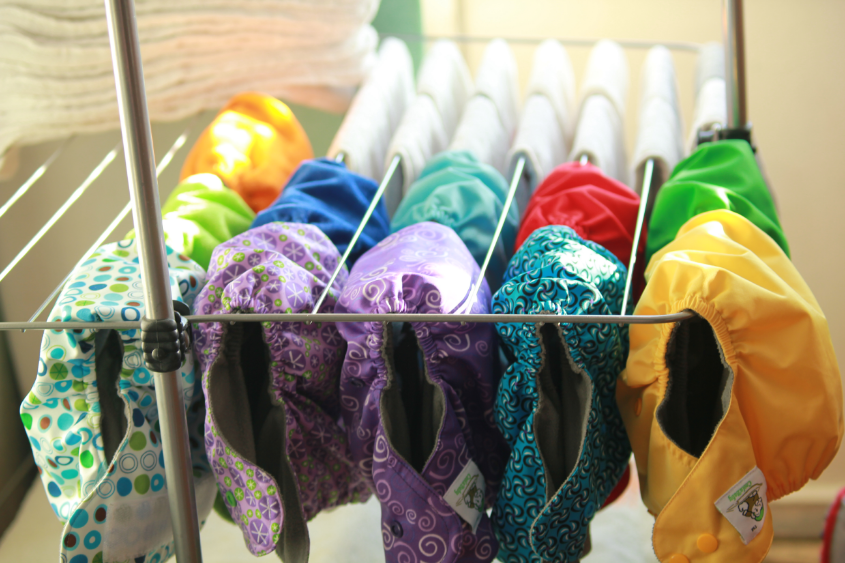
IMPORTANT : Do not dry reusable diapers and liners on hot batteries. It is allowed to dry on warm batteries or lay some kind of fabric under them. Panties dry the inner layer down, and the outer up, becausethe outer layer is very afraid of high temperatures.
If you do not follow these recommendations, the fabric of the diapers becomes coarser and loses its properties, the diapers begin to irritate the tender skin of the baby, leak and poorly absorb the liquid.
Follow these tips and reusable diapers will last you long and reliable, because their lifespan is unlimited and even with daily washing they do not lose their appearance and absorbing properties.
How many diaper diapers are needed and where to buy them?
It all depends on how you use them, which diapers you choose, whether you will use disposable( for example, a night's sleep and a walk in the winter).On average, 5-10 panties will go for one child and 2 times more liners per day. It is convenient in the evening to wash all the diapers used in the day in a washing machine and hang them for the night. Then in the morning you will have a clean and fresh kit for the whole day.
Reusable diapers of various companies can be bought in many online stores. The choice is great enough, choose to your taste and purse.
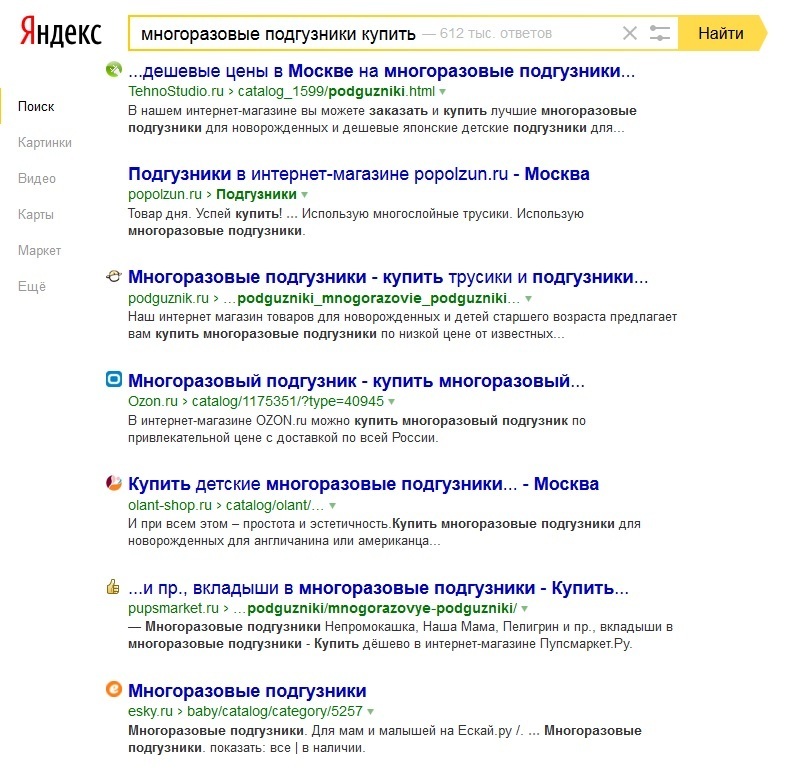 By the way, about the purse, you will pay for the purchase of reusable diapers within the first 2-4 months, and they will last you for a long time, maybe even for one child. 😉
By the way, about the purse, you will pay for the purchase of reusable diapers within the first 2-4 months, and they will last you for a long time, maybe even for one child. 😉
